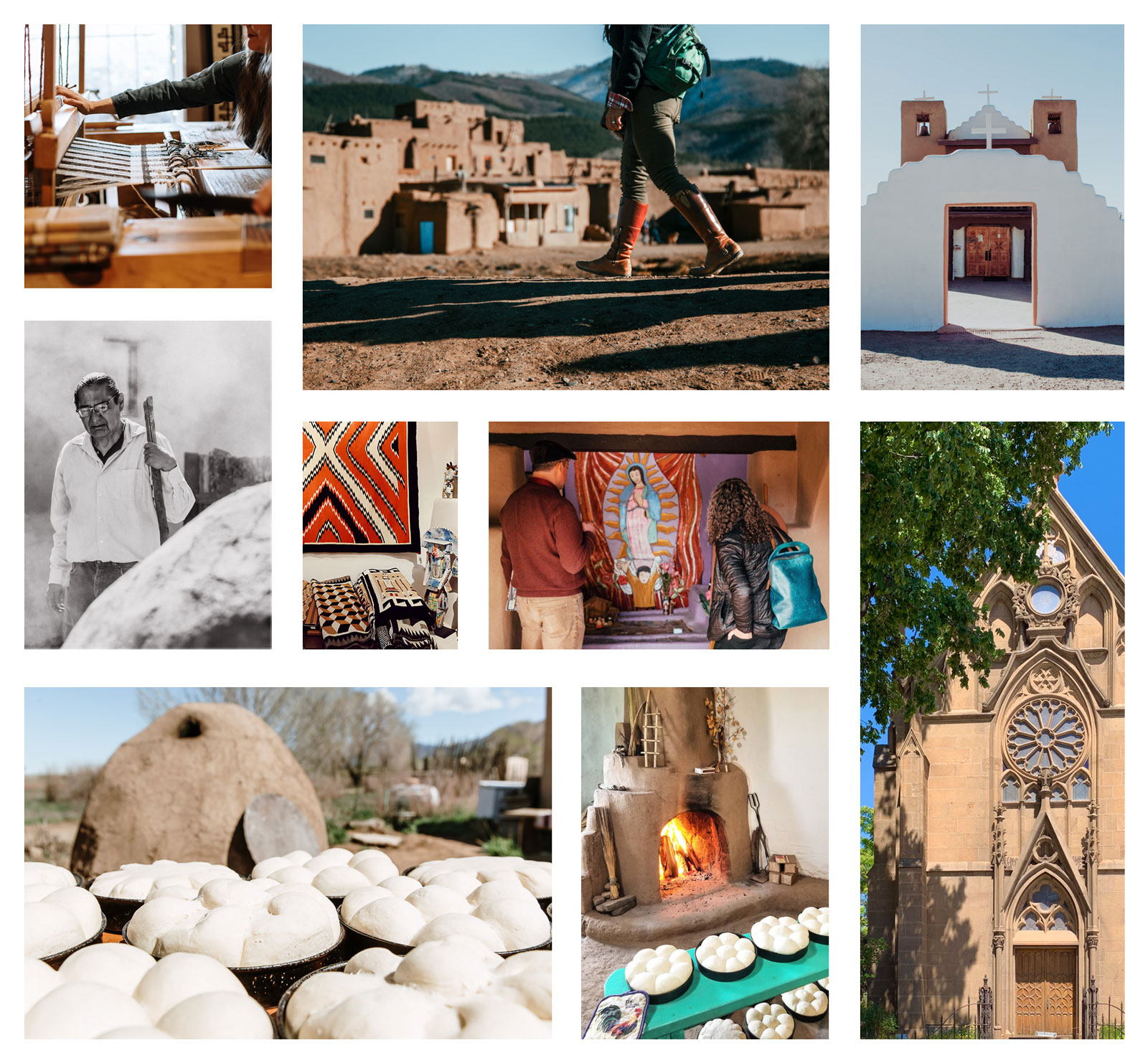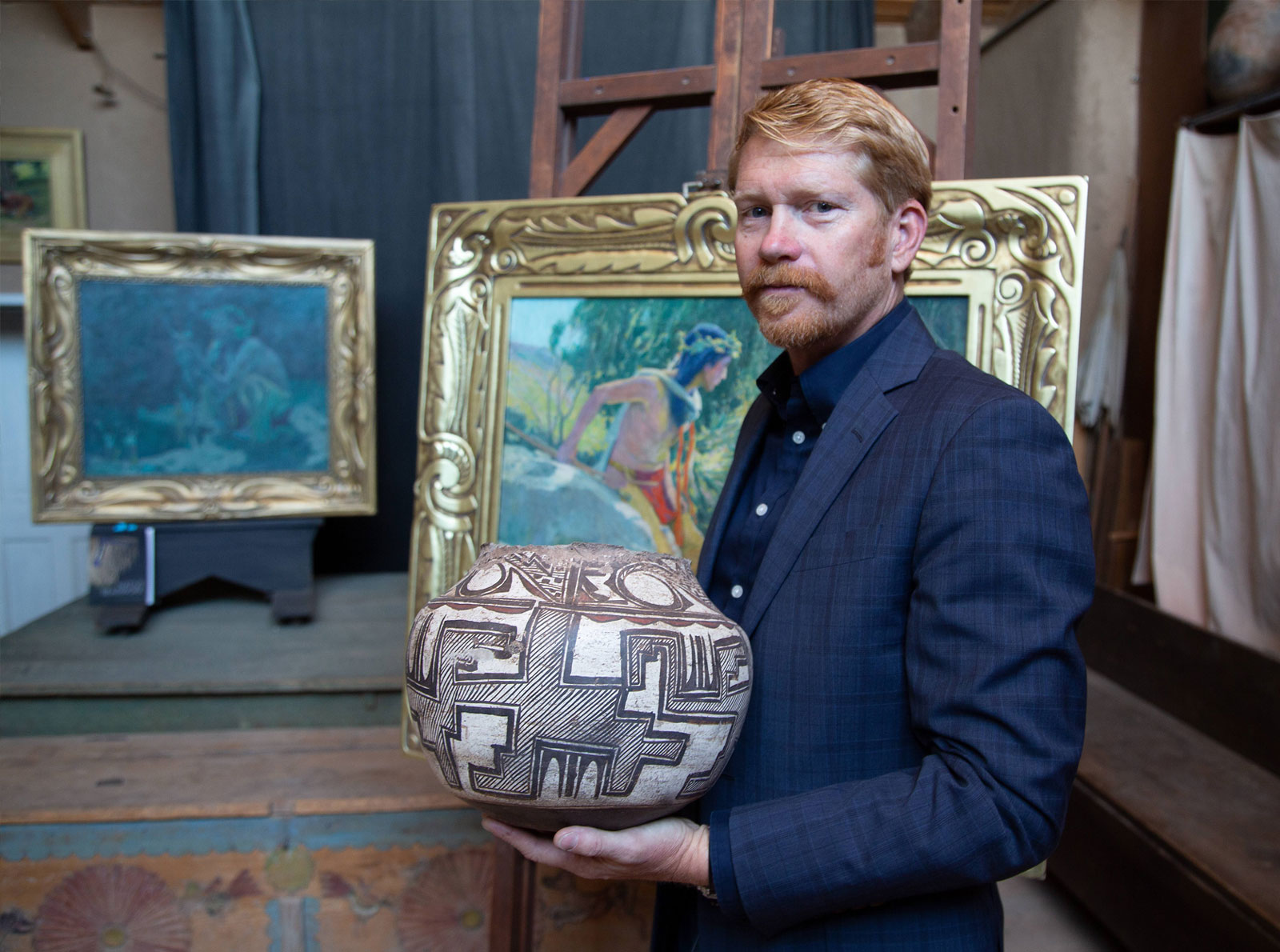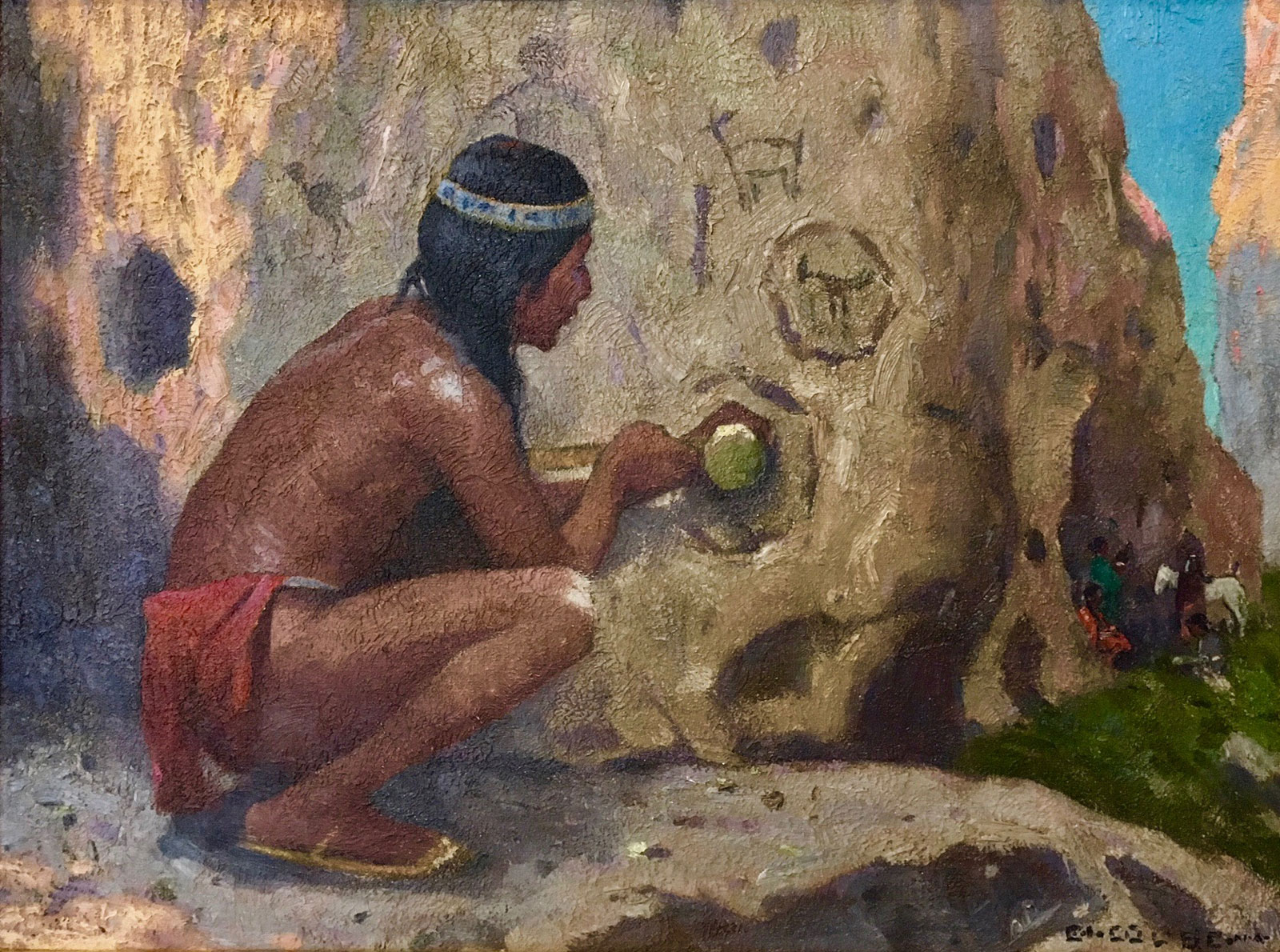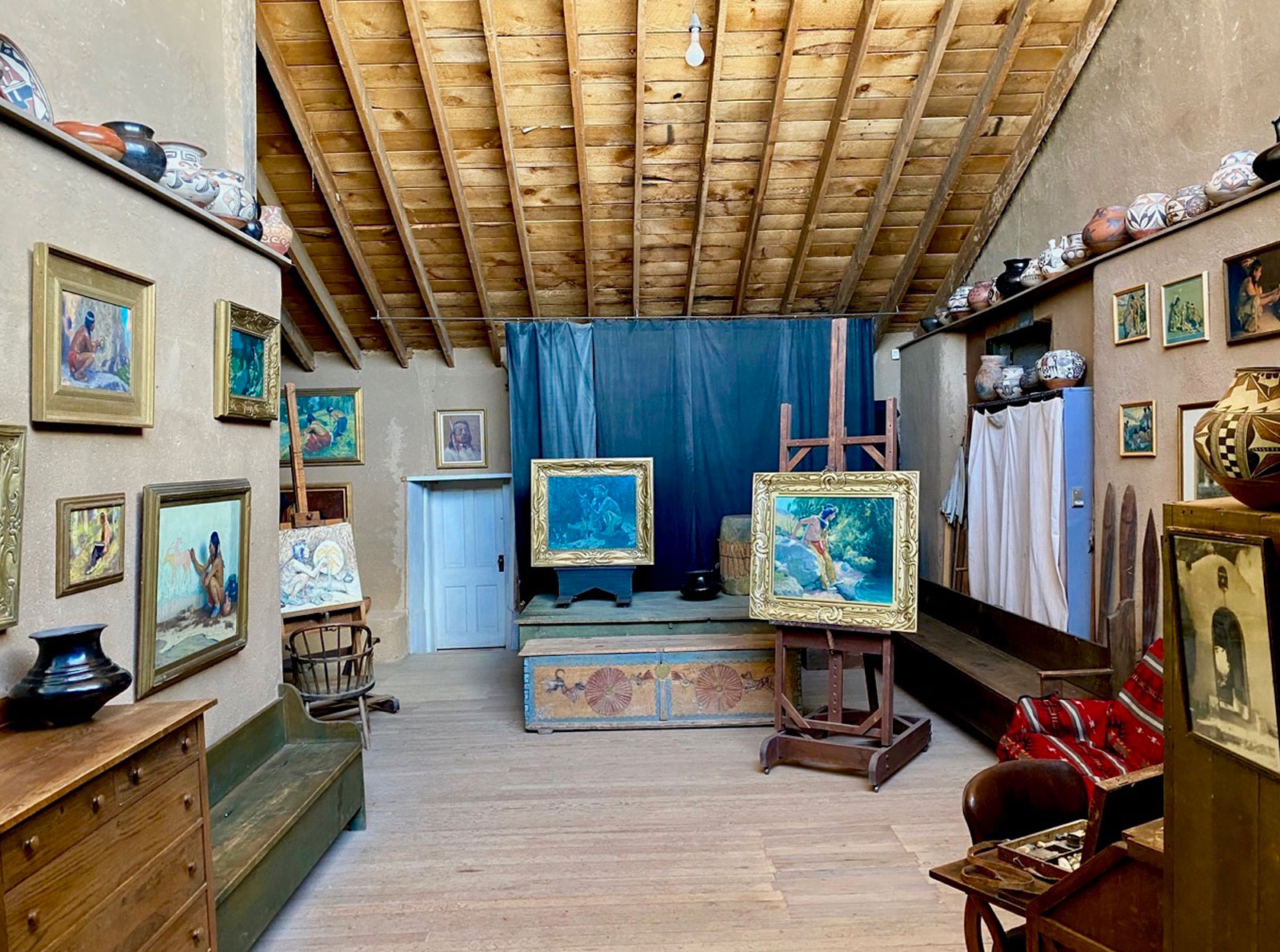The Season of Discovery with Heritage Inspirations
The Season of Discovery with Heritage Inspirations
As the Cottonwoods turn golden along the Rio Grande, and the Canada Geese flies overhead in long rope formations, New Mexico prepares for winter. Farmers Markets still boast beets, winter squash and fresh cider, most operating till the end of October. And many New Mexicans prepare foods by roasting and drying chile, sun baking corn (chicos), and canning apricot and plum preserves.

All of this preparation sustains communities from the southern Pecan groves of the Mesilla Valley to the Piñon and Juniper forests of the Sangre de Cristo Mountains. And while crackling piñon fires in Kiva fireplaces warm the body on cool nights, it is New Mexico’s vibrant culture that brightens the spirit
over the winter months.
At Heritage Inspirations culture is never “out of season“ and our inspirational tours transport you into the center of our thriving art community. Whether you are guided through the living Puebloan buildings of Taos Pueblo with our Tribal guides, trying your hand at “horno baking”( the traditional beehive shaped adobe ovens) with one of our indigenous family partners, exploring the mystical churches of Santa Fe, or taking in the contemporary public art of Albuquerque, we invite you into a world like no other. Take the chill off this winter as you explore our New Mexican cuisine, sunny adobe neighborhoods, and colorful art galleries. The H.I. family welcomes you home with our thoughtfully curated tours enhanced by our local partners and expert guides, as well as, our natural knack for having fun. Book your journey today.
This week we visit with Executive Director + Curator Davison Koenig of the Couse-Sharp Historic Site in Taos, New Mexico. The grounds of this historic site are often our first stop on our Taos Artisan Walking Tour. Read along to find out more about the Taos Society of Artists, the art, the relationships and the culture they inspired.
A Conversation with Executive Director + Curator Davison Koenig and H.I.enthusiast Anee Ward



PHOTO CREDIT: Bill Curry (Davison Koenig in Couse-Sharp Studio) | PAINTING INFO: Pictographs – alternate title: The Pictographs, Rito de los Frijoles | Eanger Irving Couse (1866 – 1936) | c.1911 | Oil on canvas | 12 x 16 in. (30.5 x 40.6 cm) | Signed lower right: E-I- COUSE-N.A. | Inscribed verso on upper stretcher bar: Pictographs, Rito de los Frijoles | The model featured in the work is Jerry Mirabal – T’ö’mana (Tiwa), Elk Foot (English).
Davison Koenig has worked as the Executive Director and Curator for the Couse-Sharp Historic Site in Taos, New Mexico for the past six years. The campus includes the home and studio of E.I. Couse, the studios of Joseph Henry Sharp (founders of the Taos Society of Artists 1915-1927), the gardens designed by Virginia Couse and Ben Lujan, and the Lunder Research Center. In our conversation Davison dives deep into the relationships, the art, and the collaboration that nourished this unique chapter in New Mexico history.
Anee: What makes the Couse-Sharp Historic Site significant and why is it such an integral part of our history?
Davison: The Couse-Sharp site illuminates what life was like in Taos for artists who migrated to the west, and provides a context for the confluence of Indigenous, Hispano, and Anglo cultures. The Couse House (1936) is a time capsule, as if the homeowners walked out an hour ago. The home features Spanish Colonial religious art and furniture – the buildings are perfect gems of Taos vernacular architecture, the Taos Society of Artists (TSA) paintings are intimate and masterful, plus the Lunder Research Center houses Native American Art, letters, photographs and research material on the TSA. Not to mention the contemporary work that has been inspired by this unique period in time.
Anee: Can you tell me a little bit about the camaraderie amongst the Taos Society of Artists?
Davison: What makes the Taos Society of Artists singular is that they worked collectively. They had to rely on each other in this remote outpost. They created traveling exhibitions, critiqued each other’s work, and shared resources. They wrote articles for national magazines, and their exhibitions traveled all over – including Boston, New York, Cincinnati, and the west coast. They knew they were stronger together than apart. They strove to create a uniquely American Art with a vibrant palette inspired by their colorful subject matter. They also drew collectors like J.D. Rockefeller to Taos.
Anee: Can you tell me a little about the artist’s relationships to their Puebloan models?
Davison: The relationships the artists forged with their Indigenous models was and is significant. Artists had their favorite models, as it was a challenge to create a narrative story through a pose. It was very much a collaborative process.
The models were not merely passive sitters but agents of social change at a time when indigenous peoples were referred to as the “Indian Problem” and Americans’ exposure to indigenous people was through popular culture depictions of “warring Indians.” The Taos Society of Artists depicted their indigenous partners with dignity and respect, portraying the interior life of Taos Pueblo.
One of my favorite photos is of Jerry Mirabal on a stool looking at a portrait of himself by Henry Sharp, with a cigarette in his mouth. He is obviously critiquing the portrait. The models and artists were very self-aware, this was not a naive relationship.
100 years ago people needed each other to survive. Unlike today, where we all have cell phones, and insular careers. Sure the relationships were complex but people relied on each other in the remote outpost of Taos.
Anee: What makes New Mexico’s history unlike any place in the world?
Davison: What sets New Mexico apart is its cultural diversity – spanning millennia. Ancestral Puebloan peoples on the perimeter of Mesoamerica, this land has been occupied over 15,000 years. The Spanish arrived over 400 years ago and still hold onto their traditions. And then you have the migration of easterners in the 1800’s. The confluence of culture and art is unmatched by any region in North America, but don’t take my word for it, come pay us a visit.


